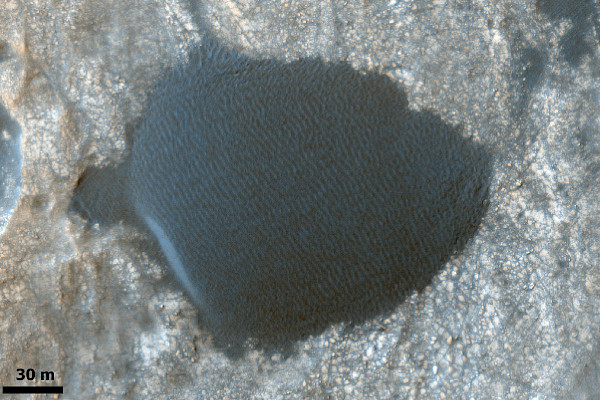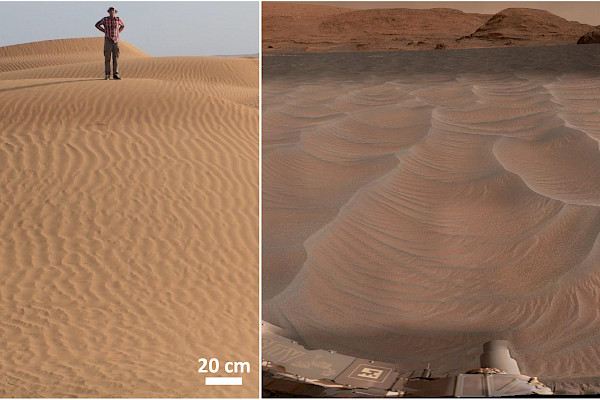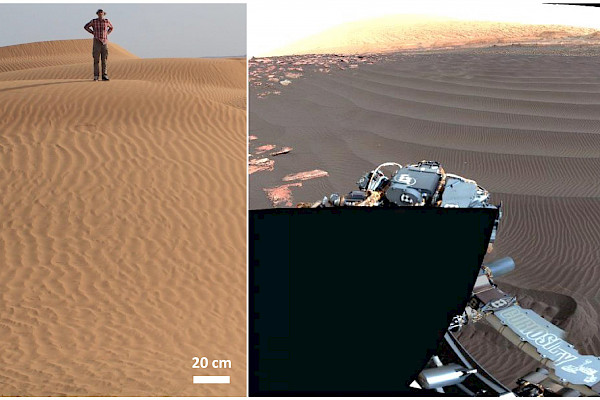Study led by the University of Coimbra develops a model for analysing the paleoclimate evolution on Mars
According to the author of the study, the data and models presented in this research also make it possible to interpret the sedimentary record and could be used to find out when and how Mars lost a significant part of its atmosphere.
Martian Ripples covering dunes in the Nili Patera region, observed from images obtained by the Mars Reconnaissance Orbiter mission (NASA/JPL- Caltech/UArizona).
© DR
English version: Diana Taborda
A study conducted by researchers of the Department of Earth Sciences (DCT) of the Faculty of Sciences and Technology, University of Coimbra (FCTUC), resulted in an accurate model that may allow the analysis of Mars' paleoclimate evolution.
The research, coordinated by David Vaz, researcher at the Centre for Earth and Space Research of the University of Coimbra (CITEUC), aimed to identify the mechanisms responsible for the formation of wind ripples on Mars, mapping these sedimentary structures on a global scale and measuring their size in order to assess the accuracy of data used in previous studies.
“Ripples are undulations that form in sediments caused by the action of a moving fluid. In the case of wind ripples, the wind exerts a force on the sand particles, which creates small ripples on the surface of dunes, something that everyone has already seen, for example on the beach,” explains David Vaz. On Planet Earth “ripples are small, with a spacing of about 10 cm. On Mars, due to the different conditions on the planet's surface, ripple-like bedforms are much larger, with spacings of 2 to 5 metres”.
According to the DCT researcher, with this study it was possible to conclude that there is a relationship between the size of the bedforms and the atmospheric pressure on the surface of the red planet, as predicted by one of the models studied. Vaz adds that “Understanding how wind processes shape the surface of Mars today, and in particular how these processes vary with atmospheric pressure allows us to interpret and infer atmospheric conditions in the past”.
“Thanks to the innovative methods developed in this study, it was possible to analyse with great precision a much larger extension of the surface of Mars than in previous works. These new data allow us to address some of the inconsistencies in data used in previous studies, making it possible to test the two main hypotheses that seek to explain the existence of large bedforms in Martian dunes”.
According to the author of the study, the data and models presented in this research provide further support to the interpretation of paleoatmospheric conditions on Mars through the analysis of its aeolian sedimentary record, and may be used to find out when and how Mars lost a significant part of its atmosphere. "This climate change has caused Mars to turn from a planet with water on the surface to a dry, cold and arid planet," he concludes.
The scientific article “Constraining the mechanisms of aeolian bedform formation on Mars through a global morphometric survey” is available here.



